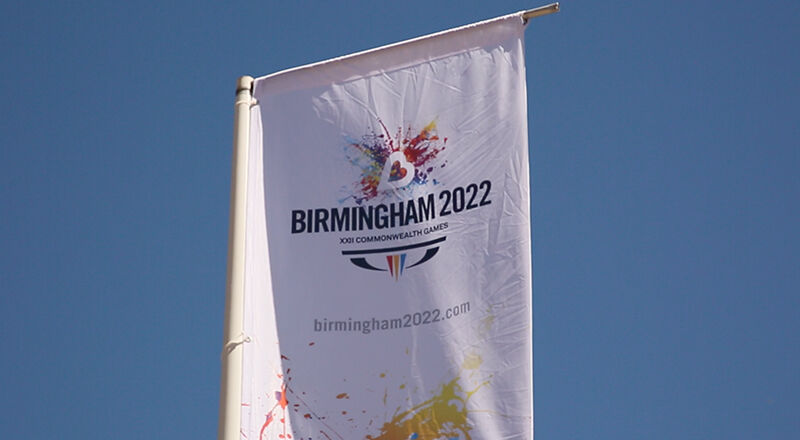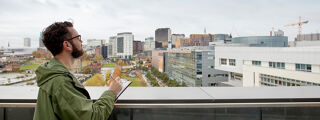There are many reasons why you should study the Built Environment in Birmingham. With major redevelopment and refurbishment projects happening, the city’s landscape is in a state of flux and bursting with opportunities for you to explore. We spoke with Senior Built Environment Lecturer, Nicki Schiessel Harvey, to hear more about projects like HS2, the Commonwealth Games 2022, Paradise Birmingham, and show you how Birmingham will give you the best start to your future.
Birmingham is undergoing major redevelopment, how will this shape students’ learning experience at the University?
The most exciting thing for me is how there is always something happening that students can draw on to make studies ‘come to life’ – property, construction and planning issues aren’t just theory when you’re in the middle of a constantly developing city. Our graduates and placement students are involved in projects all over the region and the city. We use live case studies with industry panels in many of our module assessments, meaning our students can be involved in local projects to build their CV while studying and improve their employment prospects.
Built Environment courses
Explore our courses and choose the right one for you
Which built environment project in Birmingham is most likely to have the biggest impact on the city’s future?
High Speed 2 is definitely the most influential project in my view. The line of the route and the station has a massive impact on the way the city centre is developing. The station building site is directly outside our campus and the next decade will see this project shape the east side of the city. Already the prospect of the new line is driving investment into the city, as Birmingham has been named the UK's most investable city in 2018.
How will Birmingham’s various building projects, like Paradise Circus (a major regeneration complex of projects in the heart of the city), affect each student group?
No one profession can operate in isolation in the Built Environment, so our courses focus on how different professions interact and overlap. We all have our part to play in most projects. On a site level, developments like Paradise Circus, require Construction Managers and Quantity Surveyors to manage tight timescales, specifications and budgets in a busy local area. The industrial heritage of Birmingham means that buildings need to be adapted for reuse. A great example is the Grade 1 listed Curzon St station building which will be incorporated into the new HS2 station – for Building Surveyors and Architectural Technologists, exploring ways to adapt, yet preserve, such a significant structure within a modern design is an exciting challenge.
How have current students been involved in building projects in the city and how does the University facilitate them?
For the construction of several of our new campus buildings, we have partnered with contractors to give students access to live sites. These can range from site visits to see buildings at different stages through to placements of different lengths. For example, a placement student working with Wilmott Dixon on our Curzon Building is now a BIM manager for them. Students studying Construction Management and Quantity Surveying were involved in our City South developments as part of their learning. While our current final year students are working up designs for the reinstatement of Kings Heath Station for the City Council. Additionally, our first years have met the project manager for the Commonwealth Games and are looking at which factors will influence the delivery of the Athlete’s Village.

Which project in Birmingham has most changed the way students learn about the Built Environment?
The collapse of Carillion in early 2018 was a wake-up call for the industry and a really useful example of how the way projects are procured and run can affect the success of one development, and more importantly the way a whole supply chain operates. Seeing major projects such as Paradise Circus or the Midlands Metropolitan Hospital stopped suddenly – and then picked up by new contractors has – been really valuable as a case study.
Our own campus buildings were designed and built using BIM which our students have had access to. By having a rolling programme of construction of our own students have been able to see how techniques and project management changes. In my view it’s not individual projects, but getting involved in a range of projects, all different, that best helps students learn about the Built Environment.
Why is studying in a city the best place for a Built Environment student to be?
When you live, work and socialise in a city you’re constantly surrounded by examples of what you are learning about. Birmingham provides our students with many opportunities to build networks and experience in their field, and be part of an ever-changing environment. Studying the built environment in the midst of hundreds of developments is perfect!
Built Environment courses
Explore our courses and choose the right one for you
